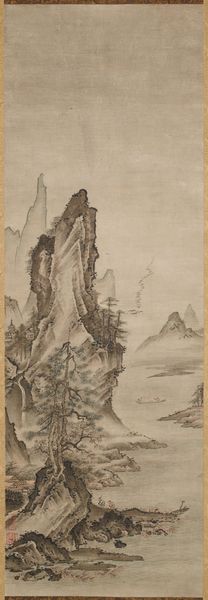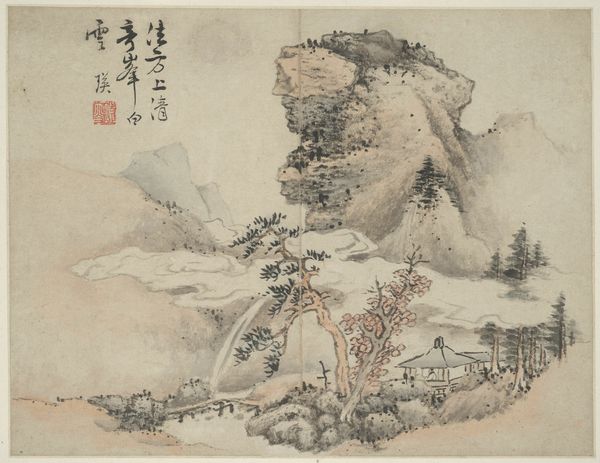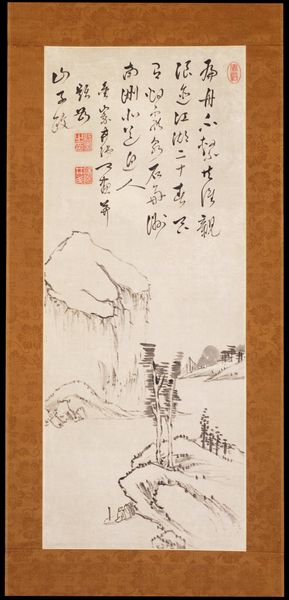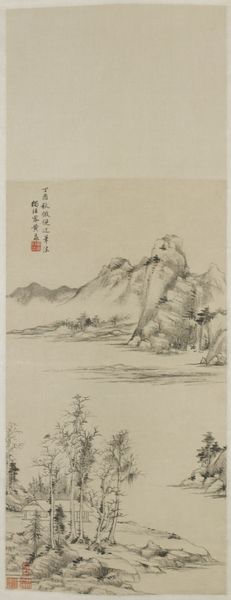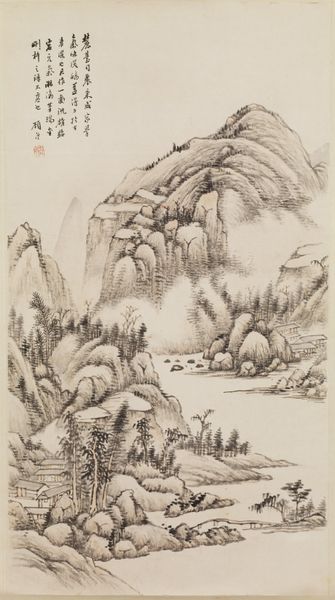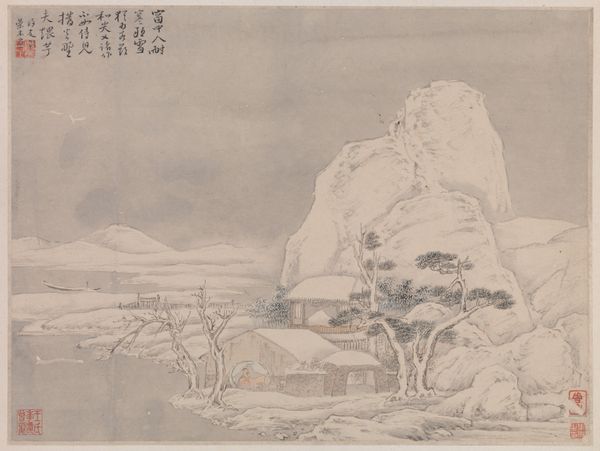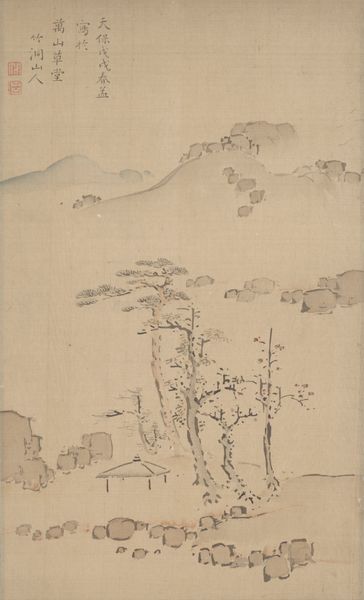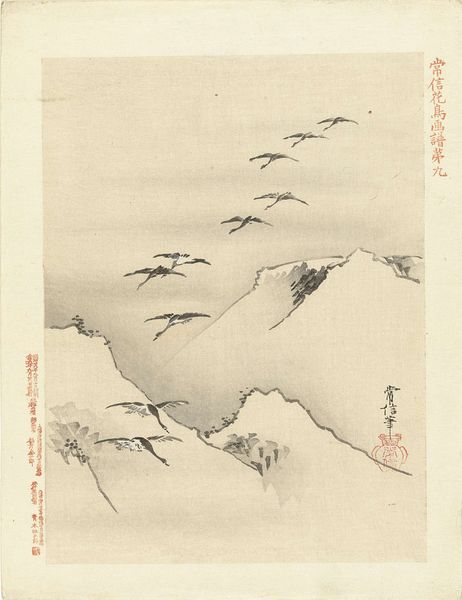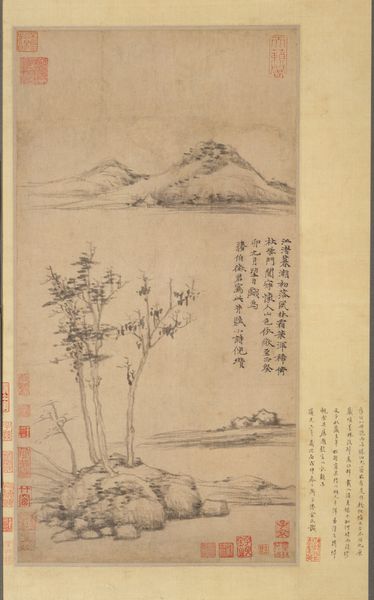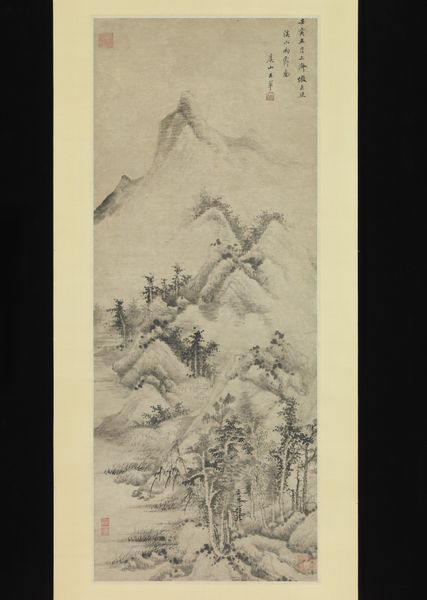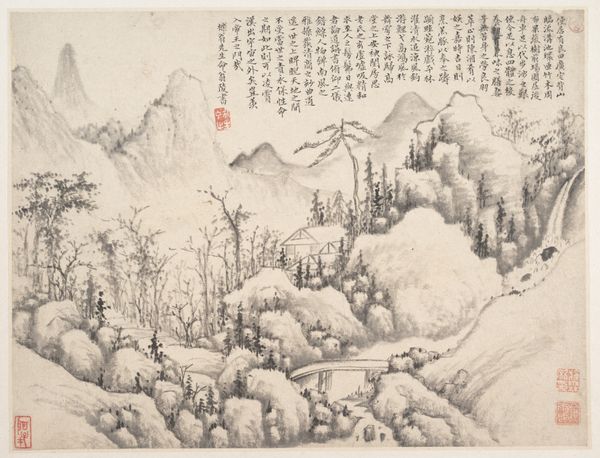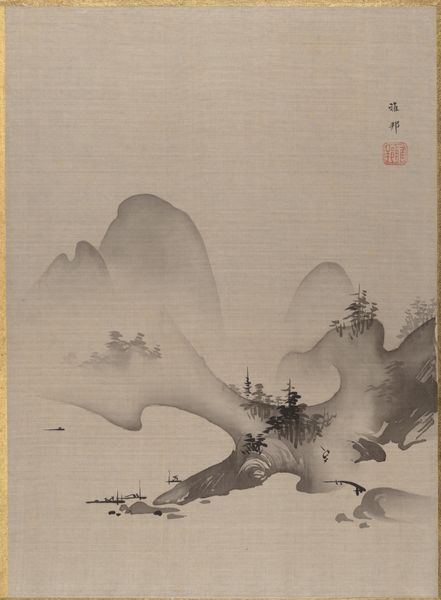
painting, watercolor, hanging-scroll
#
painting
#
asian-art
#
landscape
#
japan
#
watercolor
#
hanging-scroll
#
watercolor
#
calligraphy
Dimensions: 18 3/4 x 12 3/8 in. (47.63 x 31.43 cm) (image)
Copyright: Public Domain
Editor: Here we have "Snowscape," a watercolor on a hanging scroll, created in 1865 by Hidaka Tetsuo. It’s very subtle, almost monochromatic. I’m struck by how the artist uses such minimal means to convey the vastness of the landscape. What catches your eye? Curator: The first thing I see is the stark contrast between the natural landscape and the small architectural structures. It speaks to the interaction, or perhaps imposition, of human labor on the environment. Note the methods involved – watercolor, a portable medium reflecting perhaps the artist’s access to resources and leisure. Is this depiction about man's relationship to nature and a social commentary of labour? Editor: That's interesting. I was focusing more on the aesthetic and the artistic technique, but your focus brings attention to the process, the material aspect. How might the choice of a hanging scroll as a support affect our reading of the work? Curator: The hanging scroll format immediately ties the work to a specific set of traditions, labor, and class. These scrolls weren't mass-produced; they were often commissioned or made for specific audiences. The silk itself had a huge cultural value. Consider the craftsmanship involved in preparing the scroll – the mounting, the silk brocade – all contributing to its status as an object of value, accessible perhaps only to a limited section of the population. Who made the brushes? The ink? Editor: I never thought about the scroll itself carrying meaning. The materiality becomes so much more present! Curator: Exactly! Even the act of displaying or concealing it changes its meaning, its engagement with a user/owner as almost like a performance as you install it to view and display wealth or sophistication. What else does the "snowscape" reveal to you through the way that it was crafted and by what? Editor: I see a different angle now, beyond just the imagery. I'll certainly be considering the materials and their histories more consciously. Curator: Indeed! Considering the 'how' and 'who' adds a richer and vital social dimension to our appreciation of art and labor, which is, in essence, materialist appreciation!
Comments
No comments
Be the first to comment and join the conversation on the ultimate creative platform.
